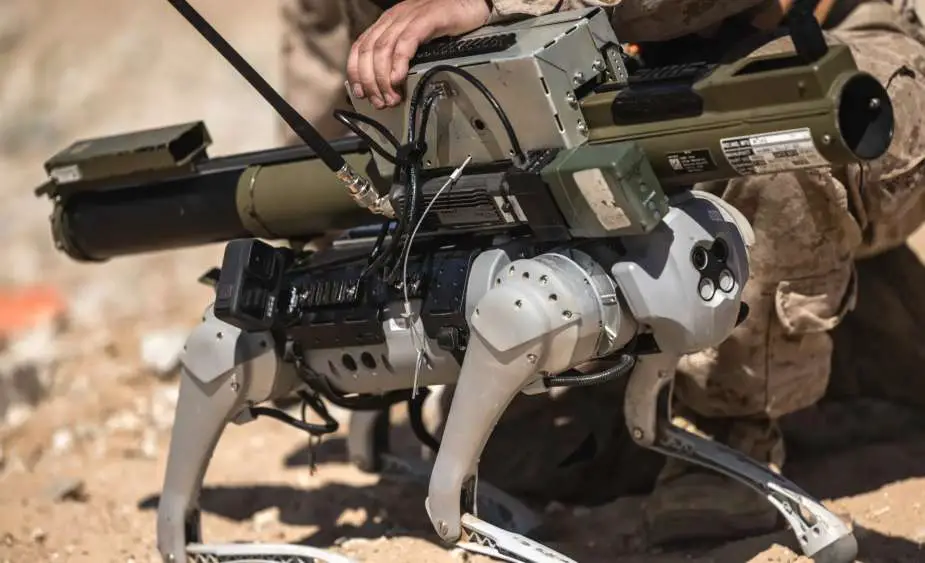US Marines test fire robot dog armed with M72 infantry anti-armor rocket launcher
The U.S. Marine Corps recently conducted a test involving a robot dog equipped with a training version of the M72 infantry anti-armor rocket launcher, according to a report by Joseph Therithick in The War Zone. This test highlights the growing interest in arming four-legged unmanned ground systems, not only within the U.S. military but also among foreign forces, particularly in China and Russia.
Follow Army Recognition on Google News at this link

The Chinese-made Unitree Go1 robot dog's weapon system consists of a dedicated mount designed to accommodate and fire an M72-series rocket launcher (Picture source: USMC)
The experiment took place in September and was carried out by the Marine Air Ground Task Force Training Command's Tactical Training and Exercise Control group (TTECG), stationed at the Marine Corps Air Ground Combat Center in Twentynine Palms, California. Additionally, the U.S. Navy's Office of Naval Research (ONR) participated in this demonstration, which was described as a proof-of-concept exercise.
Details regarding the specific capabilities of the Marine Corps' robot dog remain limited. However, visual evidence from pictures and videos released by the Marines indicates that the core quadrupedal robot used in the test is the Chinese-made Unitree Go1, Joseph Therithick writes. Interestingly, the Marines referred to this design as a "robotic goat" rather than the more commonly used "robot dog" terminology, though the reason behind this terminology choice remains unclear.
The robot dog's weapon system consists of a dedicated mount designed to accommodate and fire an M72-series rocket launcher, along with a forward-facing GoPro camera positioned on the right side. The robot also features rails installed at various points, allowing for the attachment of additional cameras, aiming lasers, and various other accessories. In a video from the September test, the robot dog is seen successfully firing the mounted launcher from a stationary position, with sandbags on either side for safety. Additionally, the video shows a Marine removing the launcher from the mount, providing insight into the potential field reloading process.
For this particular demonstration, an M72AS trainer was used, firing a 21mm rocket equipped with a tracer element at the rear. The M72AS serves the purpose of replicating the overall feel and performance of a standard M72 rocket launcher firing a 66mm rocket while offering a cost-effective and reusable training system. Various versions of the M72, initially introduced in the 1960s, remain in production today, each offering distinct capabilities.
While the Marine Corps' robot dog is currently considered a proof-of-concept design, its potential value as an armed system is readily apparent. Engaging armored vehicles through dismounted attacks can be fraught with danger, especially in complex urban environments. The ability to approach such targets remotely increases the likelihood of success while minimizing risks to human personnel. In addition to its offensive capabilities, a remotely operated quadrupedal robot armed with a rocket launcher or other weapons, including small arms, can serve as an invaluable reconnaissance asset, capable of scouting ahead of friendly forces and promptly engaging identified threats. This concept represents a promising development in modern military technology and tactics, addressing the challenges of urban warfare and armored vehicle engagements.

M72AS trainer with a 21mm rocket (Picture source: Nammo)
Defense News October 2023


























